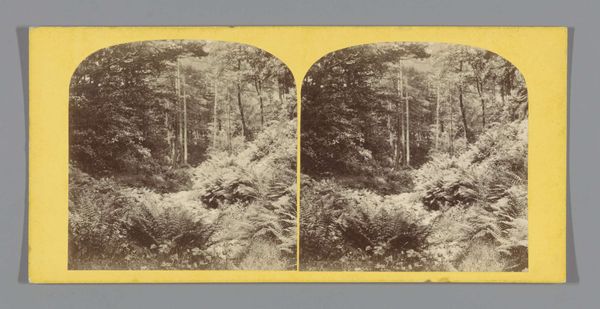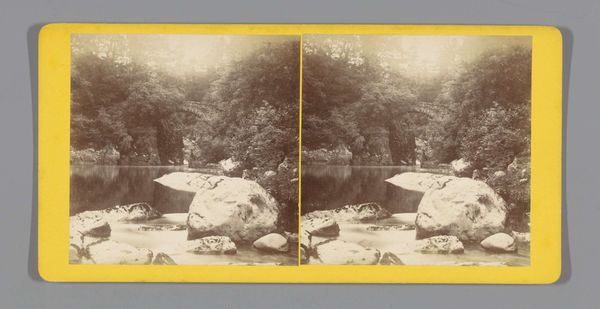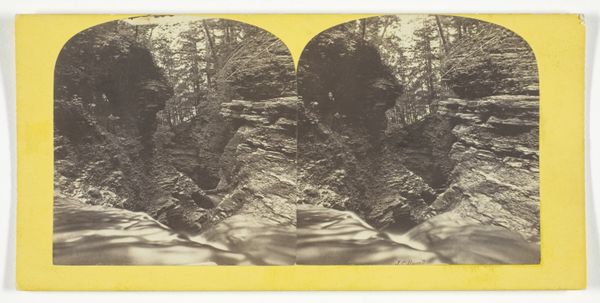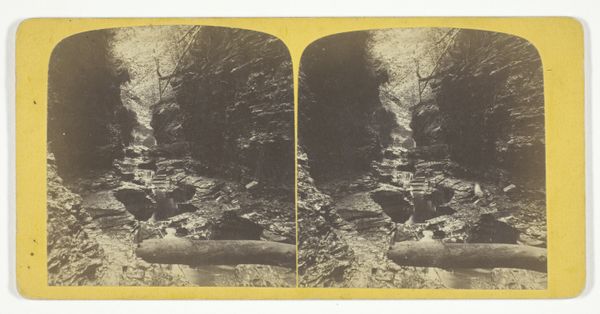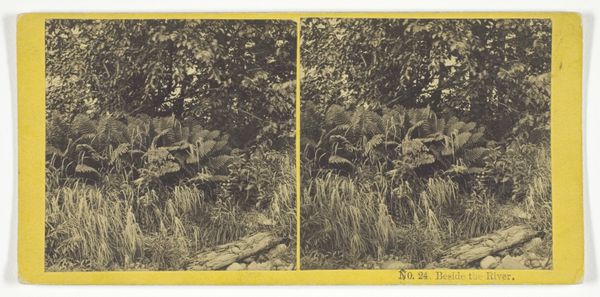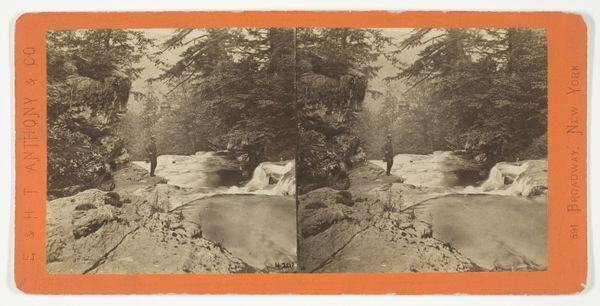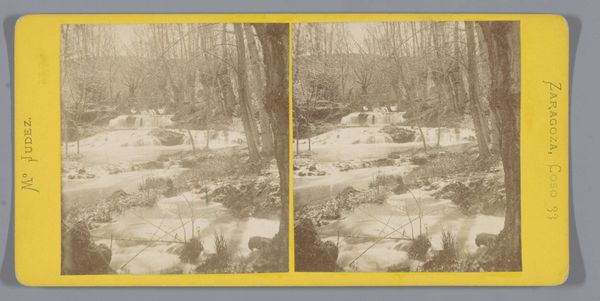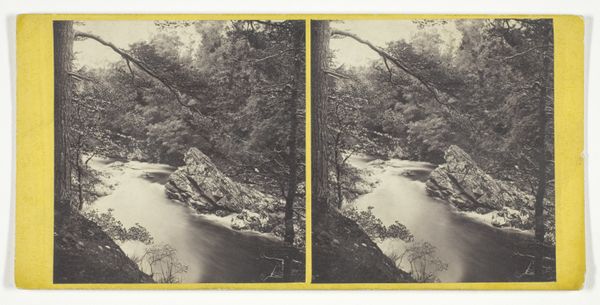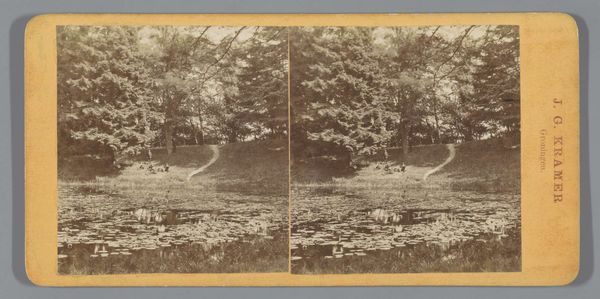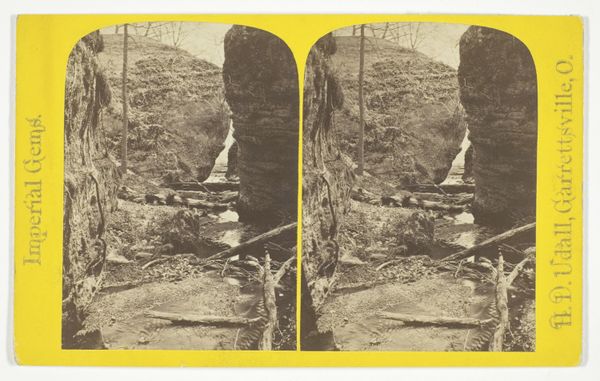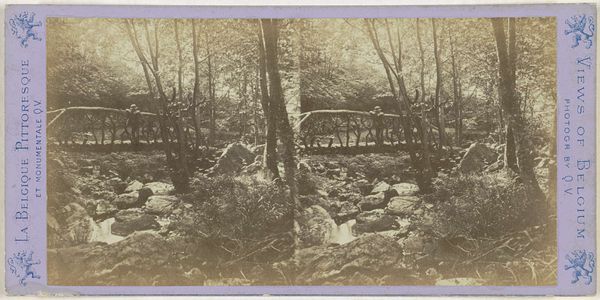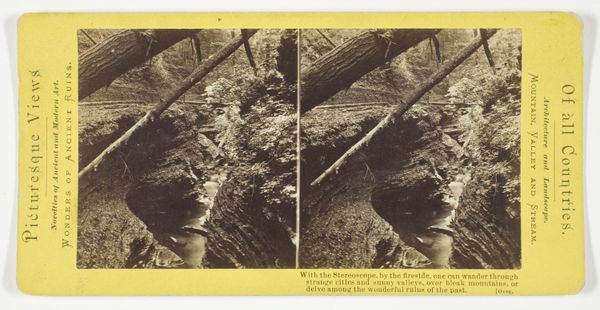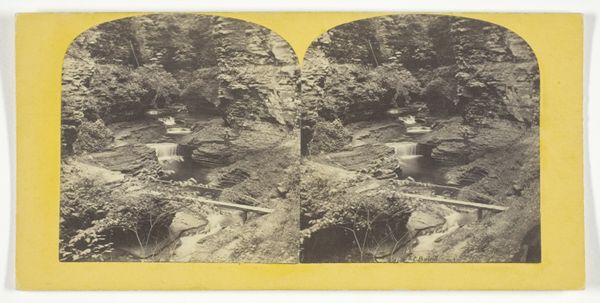
photography, albumen-print
#
16_19th-century
#
landscape
#
photography
#
romanticism
#
albumen-print
Dimensions: 7.4 × 7.4 cm (each image); 8.4 × 17.4 cm (card)
Copyright: Public Domain
This stereoscopic card, made by G. W. Wilson, presents two nearly identical photographs of a scene in the Trossachs, a region in the Scottish Highlands. These were printed using the albumen process, which involves coating paper with egg whites and silver nitrate, resulting in a glossy surface ideal for capturing fine details. The making of these cards was itself a fascinating process, requiring careful darkroom work and printing techniques, but the social context is just as interesting. The Victorian era was a boom time for photography, as industrial capitalism allowed for mass production and distribution of these images. Stereoscopic views like this one offered a novel form of immersive entertainment for middle-class consumers, providing a sense of "being there" in the Scottish Highlands without having to travel. The very act of viewing, using a special stereoscope, collapses the two images into one, creating an illusion of depth. It's a reminder that the experience of art is never just about the image itself, but also the means of its production, distribution, and consumption.
Comments
No comments
Be the first to comment and join the conversation on the ultimate creative platform.
